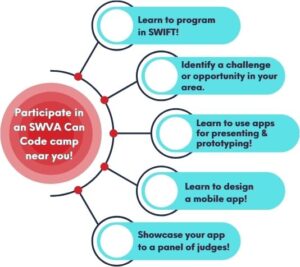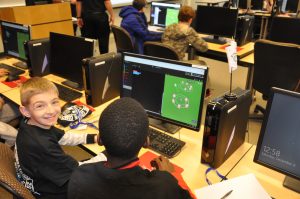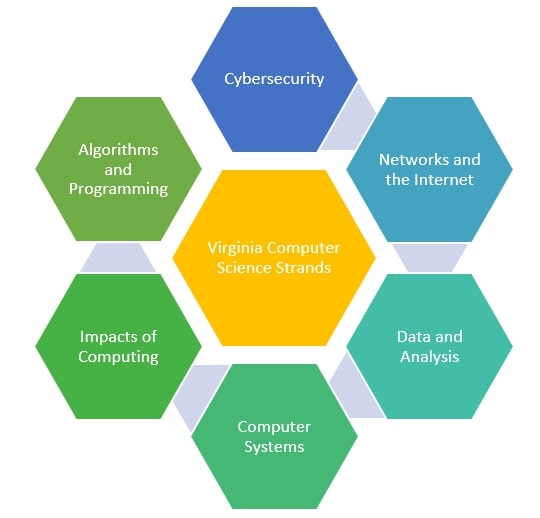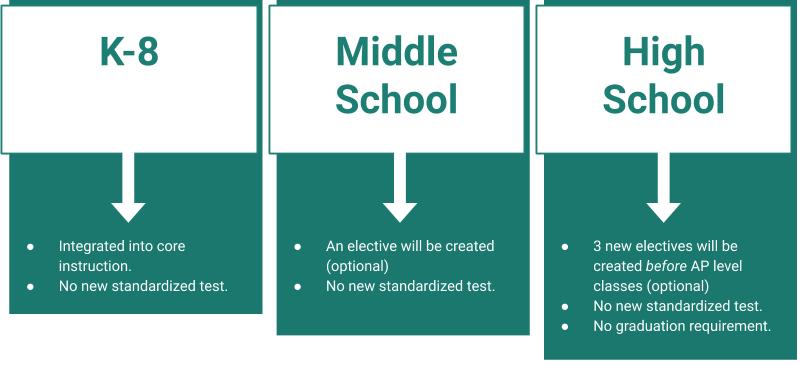written by VSTE Board Member Heather Askea (heatheraskea@vste.org, @Haskea)
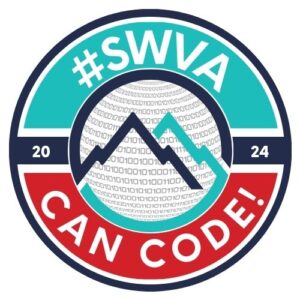 What happens when you put an idea together with an innovative idea with a proven curriculum and powerful partnerships? AWESOMENESS! That is how SWVA Can Code was born!
What happens when you put an idea together with an innovative idea with a proven curriculum and powerful partnerships? AWESOMENESS! That is how SWVA Can Code was born!
SWVA Can Code is a program that encourages 5th to 12th graders to create and develop web applications that aim to solve important problems or take advantage of opportunities within their communities. This regional initiative provides an opportunity for young students to engage in the process of designing and prototyping these apps. By participating in this program, students can contribute to their communities and make a positive impact through technology. The program empowers students to identify challenges or opportunities in their communities and find innovative solutions through coding. SWVA Can Code provides valuable web development skills and fosters creativity, problem-solving, and collaboration among young minds. Built on Apple’s Everyone Can Code framework, SWVA Can Code was heavily inspired by Montgomery Can Code (MD) and DC Can Code. But as lead organizer for this initiative, I knew that Southwest Virginia was going to have to take a different approach to bring this to life.
The key vision for this project was to engage students in learning skills that could propel them into a potential STEM career. Coding was the main focus with web application development being the creative component of each camp. The pitch part of the camp fostered collaboration and communication skills often a struggle for students. The focus on creating an app that addressed a local challenge or opportunity supported students’ understanding that they can solve problems through creative uses of technology applications.
The project was developed through partnerships with K12, Higher Education, community, industry, and government partners, and Apple Education. UVAWISE’s STREAMWISE Outreach Program serves as the coordinating entity organizing training for camp personnel, curriculum, and logistics planning support, and also providing access to extra devices as needed. Partnering school districts and higher education and community organizations provide funding for camp personnel, camp materials, and support for food and transportation as needed through their summer learning programs. Our industry and government partners provide support through service as local camp showcase judges, regional showcase judges, and provide additional funding support for the regional showcase. Apple Education supports the project through logistics, support meetings, and training for camp leaders and technical staff, and through support from their strategic initiatives team, K12 and Higher Ed solutions teams, and from Apple Marketing and Professional Learning.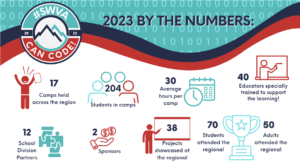
To ensure equitable access for any student wishing to participate, camps are provided free of charge to students and many schools utilize summer learning funds for transportation and meal support. The key aspect of all camps is the focus on creative solutions for challenges identified within the local communities. In 2023, students created apps that addressed mental health, physical health, social disconnects, town and area beautification efforts, tourism, food instability, etc.
One of the best outcomes from the inaugural year of the initiative was seeing our winners continue to grow. Giles County students Ava and Cooper continue to work on their app, “Calm It” which was developed to help students who struggle with anxiety. After winning the regional pitchfest held at UVAWISE on August 1, 2023, they have gone on to present at the Appalachian Council for Innovation’s Annual Gala, the Virginia Society for Education’s Annual Kid’s Talks at the annual conference held in Roanoke, VA, as well as numerous appearances at school board meetings and other community events. They were even featured in a recent webinar hosted by VSTE’s Diversity, Equity, and Inclusion Committee.
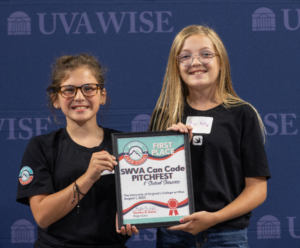
Going forward into our second year, SWVA Can Code is growing! We are expanding our camps into SWVA proper with camps in Montgomery and Floyd counties. We are also expanding to include a high school division. Our training opportunities are also more focused on SWIFT UI and getting students beyond the prototyping stage and closer to producing an app that could someday be in the Apple App Store! If you would like to learn more about SWVA Can Code or join the initiative check out https://swvacancode.com/ or contact me at haskea@uvawise.edu .
